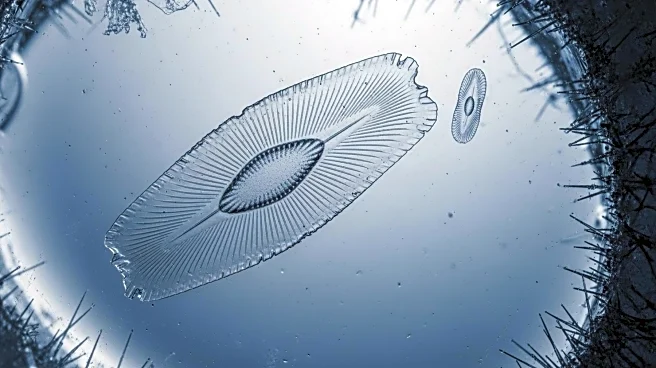What is the story about?
What's Happening?
A study conducted by researchers from Stanford University has discovered that diatoms, a type of algae found in Arctic ice, exhibit unexpected mobility despite the harsh freezing conditions. These diatoms use a mucus-like polymer to move across the ice, allowing them to search for nutrients and better living conditions. This finding challenges previous assumptions that organisms in such extreme environments are largely inactive. The study highlights the resilience and adaptability of life in extreme conditions, providing new insights into extremophiles and their potential existence on other planets.
Why It's Important?
The discovery of diatoms' mobility in Arctic ice has significant ecological implications. These tiny organisms play a crucial role in the Arctic ecosystem, contributing to nutrient cycling and supporting the food chain. Their mobility suggests they have a more active role in the ecosystem than previously thought, which could impact our understanding of Arctic biodiversity and climate change effects. Additionally, this research may inform studies on extremophiles in other environments, such as Mars, enhancing our understanding of life's potential adaptability beyond Earth.
AI Generated Content
Do you find this article useful?













